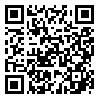1. American Psychiatric Association. Diagnostic and statistical manual of mental disorders [Internet]. 5th edition. Arlington, VA: American Psychiatric Association; 2013.
2. Sng KI, Hawes DJ, Hwang S, Allen JL, Fung DSS. Callous-unemotional traits among children and adolescents in Asian cultures: a systematic review. Journal of Cross-Cultural Psychology. 2020;51(7–8):576–96. [
DOI]
3. Frick PJ, White SF. Research Review: the importance of callous-unemotional traits for developmental models of aggressive and antisocial behavior. J Child Psychol & Psychiat. 2008;49(4):359–75. [
DOI]
4. Waller R, Hyde LW. Callous-unemotional behaviors in early childhood: the development of empathy and prosociality gone awry. Curr Opin Psychol. 2018;20:11–6. [
DOI]
5. Gardner F, Ward S, Burton J, Wilson C. The role of mother-child joint play in the early development of children’s conduct problems: a longitudinal observational study. Social Development. 2003;12(3):361–78. [
DOI]
6. Waller R, Gardner F, Hyde LW. What are the associations between parenting, callous–unemotional traits, and antisocial behavior in youth? a systematic review of evidence. Clin Psychol Rev. 2013;33(4):593–608. [
DOI]
7. Byrd AL, Hawes SW, Loeber R, Pardini DA. Interpersonal callousness from childhood to adolescence: developmental trajectories and early risk factors. J Clin Child Adolesc Psychol. 2018;47(3):467–82. [
DOI]
8. Hawes DJ, Dadds MR, Brennan J, Rhodes T, Cauchi A. Revisiting the treatment of conduct problems in children with callous-unemotional traits. Aust N Z J Psychiatry. 2013;47(7):646–53. [
DOI]
9. Donohue MR, Hoyniak CP, Tillman R, Barch DM, Luby J. Callous-unemotional traits as an intervention target and moderator of parent–child interaction therapy—emotion development treatment for preschool depression and conduct problems. J Am Acad Child Adolesc Psychiatry. 2021;60(11):1394–403. [
DOI]
10. Kimonis ER, Armstrong K. Adapting parent–child interaction therapy to treat severe conduct problems with callous-unemotional traits: a case study. Clinical Case Studies. 2012;11(3):234–52. [
DOI]
11. Beebe B, Stern DN. Engagement-disengagement and early object experiences. In: Freedman N, Grand S; editors. Communicative structures and psychic structures. Boston, MA: Springer US; 1977. pp: 35–55. [
DOI]
12. Beebe B, Jaffe J, Lachmann F. A dyadic systems view of communication. In: Auerbach JS, Levy KN, Schaffer CE; editors. Relatedness, self-definition and mental representation. 2005. pp: 23–42.
13. Furman W, Buhrmester D. Methods and measures: the network of relationships inventory: behavioral systems version. International Journal of Behavioral Development. 2009;33(5):470–8. [
DOI]
14. Stern JA, Cassidy J. Empathy from infancy to adolescence: an attachment perspective on the development of individual differences. Developmental Review. 2018;47:1–22. [
DOI]
15. Ansbacher HL, Ansbacher RR. The individual psychology of Alfred Adler. New York: Basic Books; 1956.
16. Zamanzadeh V, Ghahramanian A, Rassouli M, Abbaszadeh A, Alavi-Majd H, Nikanfar AR. Design and implementation content validity study: development of an instrument for measuring patient-centered communication. J Caring Sci. 2015;4(2):165–78. [
DOI]
17. Shi J, Mo X, Sun Z. Content validity index in scale development. Journal of Central South University. Medical sciences. 2012;37(2):152–5. [
DOI]
18. Polit DF, Beck CT, Owen SV. Is the CVI an acceptable indicator of content validity? appraisal and recommendations. Res Nurs Health. 2007;30(4):459–67. [
DOI]
19. Gfroerer K, Nelsen J, Kern RM. Positive discipline: helping children develop belonging and coping resources using individual psychology. Journal of Individual Psychology. 2013;69(4).
20. Brumariu LE. Parent-child attachment and emotion regulation. New Dir Child Adolesc Dev. 2015;2015(148):31–45. [
DOI]
21. Trevarthen C, Aitken KJ. Infant intersubjectivity: research, theory, and clinical applications. Journal of Child Psychology and Psychiatry. 2001;42(1):3–48. [
DOI]
22. Winnicott DW. From dependence towards independence in the development of the individual. In: Winnicott DW; editor. The maturational processes and the facilitating environment. First edition. Routledge: 1963.
23. Dinkmeyer D, McKay GD. Raising a responsible child: practical steps to successful family relationships. Simon & Schuster; 1973.
24. Smith S, Mullis F, Kern RM, Brack G. An Adlerian model for the etiology of aggression in adjudicated adolescents. The Family Journal. 1999;7(2):135–47. [
DOI]
25. Gfroerer KP, Kern RM, Curlette WL. Research support for individual psychology's parenting model. Journal of Individual Psychology. 2004;60(4):379-88.
26. Winnicott DW. Deprivation and delinquency. London: Routledge; 2013.
27. Pasalich DS, Waschbusch DA, Dadds MR, Hawes DJ. Emotion socialization style in parents of children with callous–unemotional traits. Child Psychiatry Hum Dev. 2014;45(2):229–42. [
DOI]
28. Jugovac S, O’Kearney R, Hawes DJ, Pasalich DS. Attachment- and emotion-focused parenting interventions for child and adolescent externalizing and internalizing behaviors: a meta-analysis. Clin Child Fam Psychol Rev. 2022. [
DOI]
29. Dadds MR, Cauchi AJ, Wimalaweera S, Hawes DJ, Brennan J. Outcomes, moderators, and mediators of empathic-emotion recognition training for complex conduct problems in childhood. Psychiatry Res. 2012;199(3):201–7. [
DOI]


 ، حمید علیزاده2
، حمید علیزاده2 

 ، شهلا پزشک2
، شهلا پزشک2 

 ، محمد عسگری3
، محمد عسگری3 





